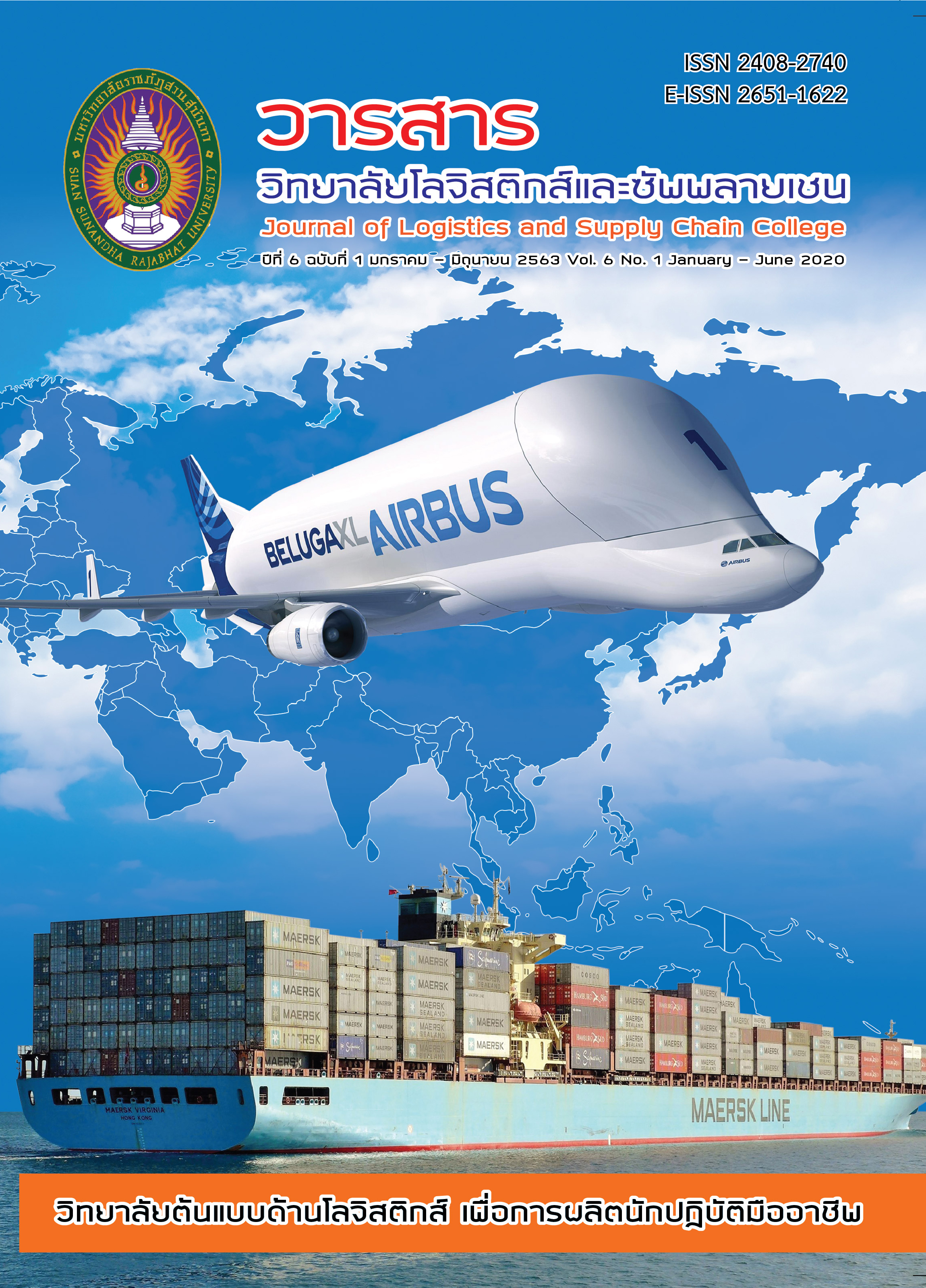Efficiency Improvement of Warehousing Area List of Spare Parts Holding Stud (STUD BOLT): A Case study of PTT Global Chemical public company limited, branch 5, Aromatic plant 2
Keywords:
EFFICIENCY IMPROVEMENT / STORAGE AREA DESIGN / WAREHOUSE MANAGEMENTAbstract
This is the study on the efficiency improvement of warehousing area list of spare parts holding stud (STUD BOLT): A case study of PTT Global Chemical public company limited, branch 5, Aromatic plant 2. “Why-Why Analysis” theory was used to analyzed the causes of the problem in warehouse management focusing on Stud Bolt / Nuts. The study employed 7 Waste principles analysis to improve efficiency. The primary data was collected by means
of observation and in-depth interview. And the secondary data was collected from statistical record of disbursement of warehouse during 2016-2019. The result shows that the efficiency can be improved by adjusting the storage space, moving storage location and rearranging the parcel list so that it is easy to pick up and put on the shelf. These help to reduce Stud Bolt / Nuts picking from 2 areas to 1 area. The approximate pick up time comparison between distance of the original storage area (B16 and D04) and the new storage locations area (D04) is as follow; the front position decreased by 61.76%, the central position decreased by 52.86% and the rear position decreased by 46.29% respectively. The Stud Bolt / Nut storage increased by 40%, resulting in better space utilization. The solution also helps to simplify the relevant processes, such as counting,
searching and storing, planning Turnaround maintenance and Mini-Shutdown period.
References
จุฬาลักษณ์ ตั้งวิวัฒน์วงศ์. (2542). ระบบรวบรวมขอมูลเพื่อศึกษากิจกรรมของคลังพัสดุ. วิทยานิพนธ์ปริญญามหาบัณฑิต, จุฬาลงกรณ์มหาวิทยาลัย.
ณัฐพงษ์ คงประเสริฐ. (ม.ป.ป.). Why – Why Analysis. Retrieved from URL http://qd.swu.ac.th/ Portals/2077/Why%20Why%20Anlysis.pdf?ver=2562-05-24-082545-380
ปณิกา ไชยตะมาตร์. (2543). การปรับปรุงประสิทธิภาพการจัดการการคลังสินค้า. วิทยานิพนธ์ปริญญามหาบัณฑิต, จุฬาลงกรณ์มหาวิทยาลัย.
พรรณี หอมทอง. (2556). ความสูญเสีย 7 ประการ (7 WASTES). Retrieved from URL http://www. thailandindustry.com/guru/view.php?id=19136.
รัฐวุฒิ วงษ์วิทย์. (2550). การปรับปรุงประสิทธิภาพการดําเนินงานคลังพัสดุ: กรณีศึกษา หน่วยงานรัฐวิสาหกิจ. วิทยานิพนธ์ปริญญามหาบัณฑิต, จุฬาลงกรณ์มหาวิทยาลัย.
วิทยา อินทร์สอน และปัทมาพร ท่อชู. (ม.ป.ป.). การวางผังโรงงานอุตสาหกรรม. Retrieved from URL
http://www.thailandindustry.com/onlinemag/view2.php?id=1229§ion=16&issues=79.
สุนันทา ศิริเจริญวัฒน์. (2555). การเพิ่มประสิทธิภาพการจัดการคลังสินค้า: กรณีศึกษา บริษัท ภูมิไทย คอมซีส จํากัด. วิทยานิพนธ์ปริญญามหาบัณฑิต, มหาวิทยาลัยหอการค้าไทย
ไชยพร ปรีชาวงษ์. (2556). การเพิ่มประสิทธิภาพคลังสินค้าอัตโนมัติด้วยการจัดแบ่งพื้นที่จัดเก็บสินค้า. วิทยานิพนธ์ปริญญามหาบัณฑิต, มหาวิทยาลัยบูรพา.
Greedisgoods. (2020). Why Why Analysis คือ อะไร ? และ ตัวอย่าง 5 Why. Retrieved from URL
https://greedisgoods.com/why-why-analysis-%E0%B8%84%E0%B8%B7%E0%B8%AD/



